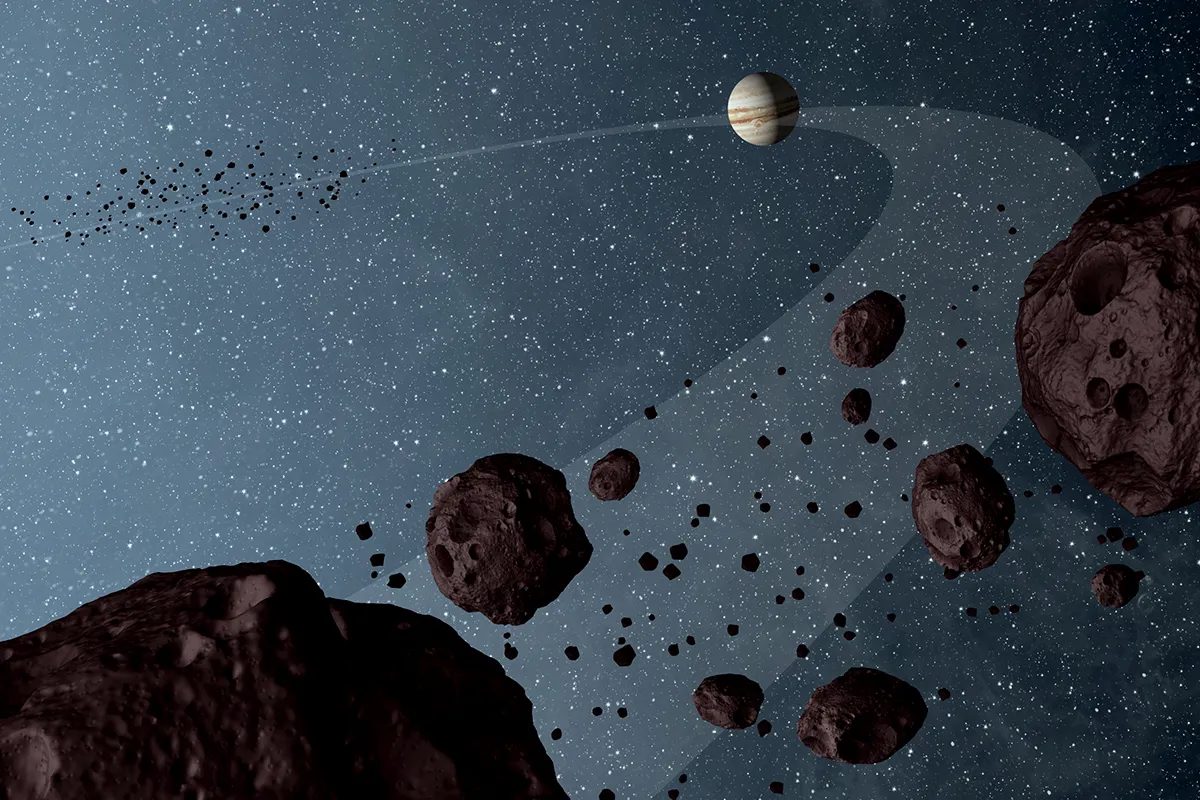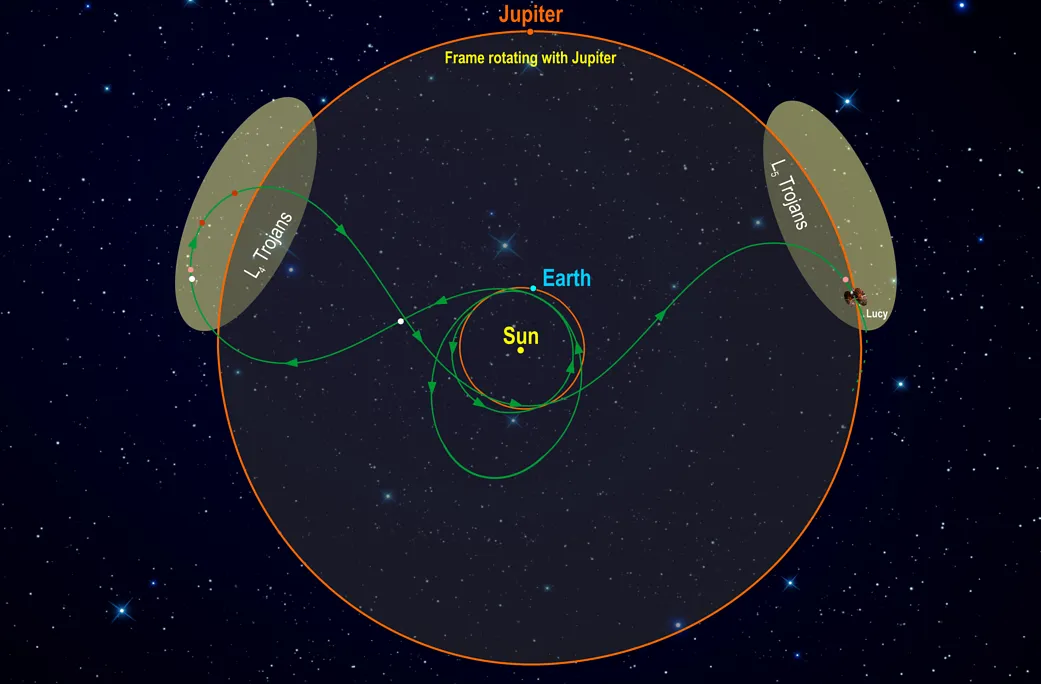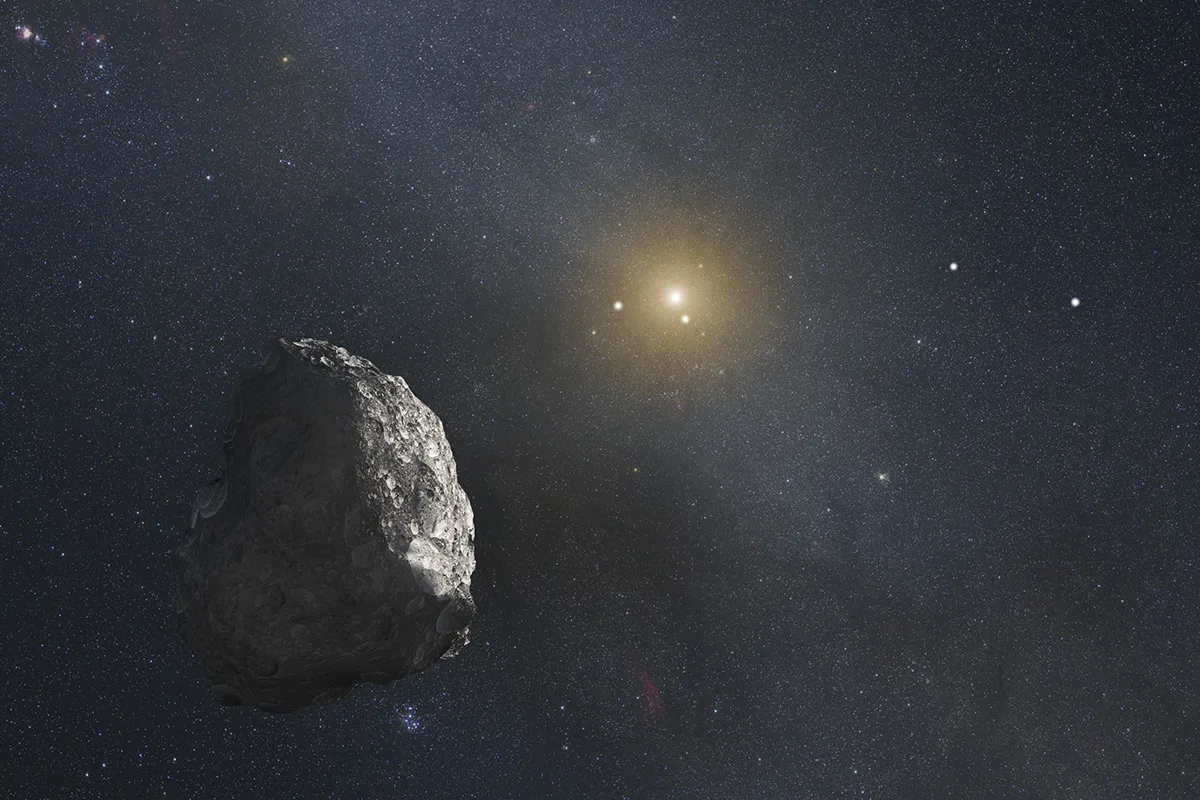On 16 October 2021 the NASA Lucy mission launched on its 12-year journey to Jupiter's Trojan asteroids.
Jupiter's Trojan asteroids are remnants of the Solar System’s formation, and will provide astronomers with a valuable insight into how our planetary system formed, like archaeologists piecing together the lives of the ancients.
NASA's Lucy mission is well on its way to the Trojans, and is due to reach the asteroids by August 2027.
But what will Lucy encounter, and why study the Trojan asteroids? Well, the mission could reveal some of the secrets regarding the formation of our Solar System.
What are the Trojan asteroids?

The Trojan asteroids share an orbit with Jupiter, orbiting the Sun either ahead of or behind the gas giant, in regions known as Lagrangian points.
Here, the gravitational pull of Jupiter and the Sun equals the centrifugal force felt by small bodies in orbit – so they can remain in place for billions of years.
Most of Jupiter’s Trojans are located at its L4 Lagrangian point, which moves ahead of Jupiter in its orbit, so that’s where Lucy is headed first.

The NASA Lucy mission will make flybys of four different asteroids between August 2027 and November 2028 studying their surface composition, geology and interiors.
Then Lucy is headed to the L5 point trailing behind Jupiter, where it will arrive five years later to study a binary Trojan asteroid.
Little is known about the Trojan asteroids because they are dark, small and far from Earth – making them very difficult to observe.
In fact it was only recently discovered that one of the first asteroids to be encountered by Lucy, Eurybates, has a moon!

What can we learn from the NASA Lucy mission?
How and where these asteroids formed is an intriguing question, since it provides an important clue to how our entire Solar System formed.
One idea is that the Trojans formed at the same time and close to the same location as Jupiter, eventually becoming captured by Jupiter’s enormous gravity.
This implies that their composition is similar to Jupiter’s early in its formation (its runaway growth and gas accumulation coming later).
The second hypothesis is that the Trojans formed much further out from the Sun – in the Kuiper Belt beyond Neptune – and were scattered into the inner Solar System when a big reshuffle of the large outer Solar System planets occurred.
In this scenario the change in gravity caused by the reshuffle kicked the Trojans inwards, where Jupiter captured them.

Even though the first scenario seems more plausible it is deemed less likely, as it cannot explain aspects of the Trojan population that the second one can: for example, why some of the Trojans have such large tilts in their orbits.
Lucy will help settle this dispute, by enabling the composition of the asteroids to be determined at high spatial resolutions.
If the asteroids are shown to have compositions similar to Jupiter’s moons then this implies that they formed close to Jupiter.
However, if the asteroid composition is more similar to the Kuiper Belt objects seen by New Horizons (Pluto, Charon and Arrokoth), that implies they formed far from the Sun, and a cosmic reshuffle early in our Solar System formation did take place.
Either way, the results promise to be fascinating.
This article originally appeared in the October 2021 issue of BBC Sky at Night Magazine.
